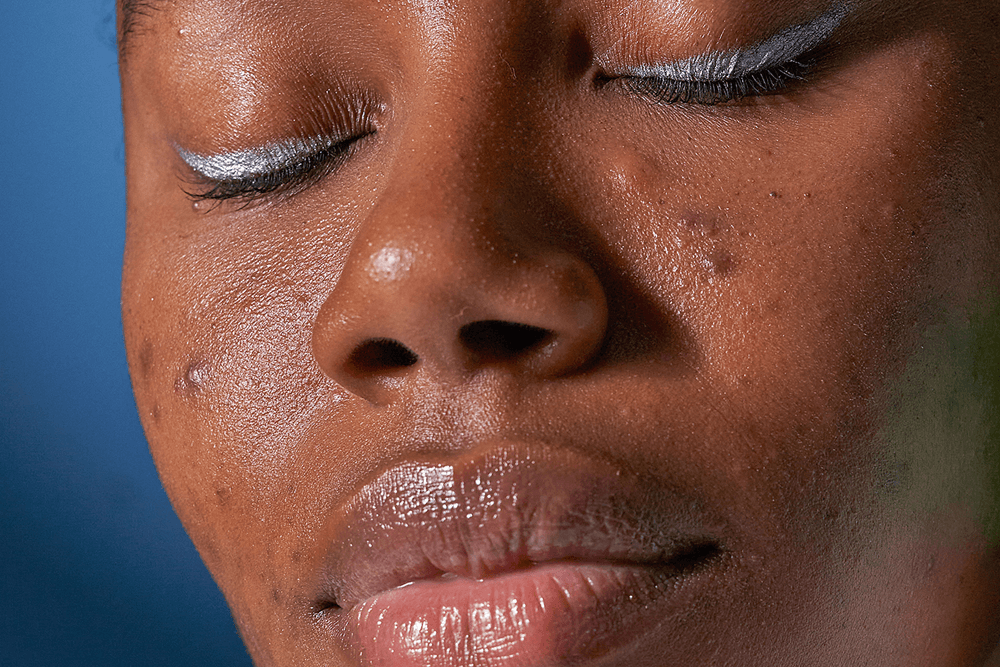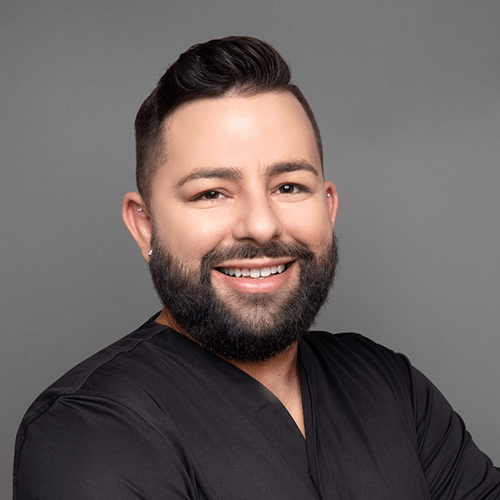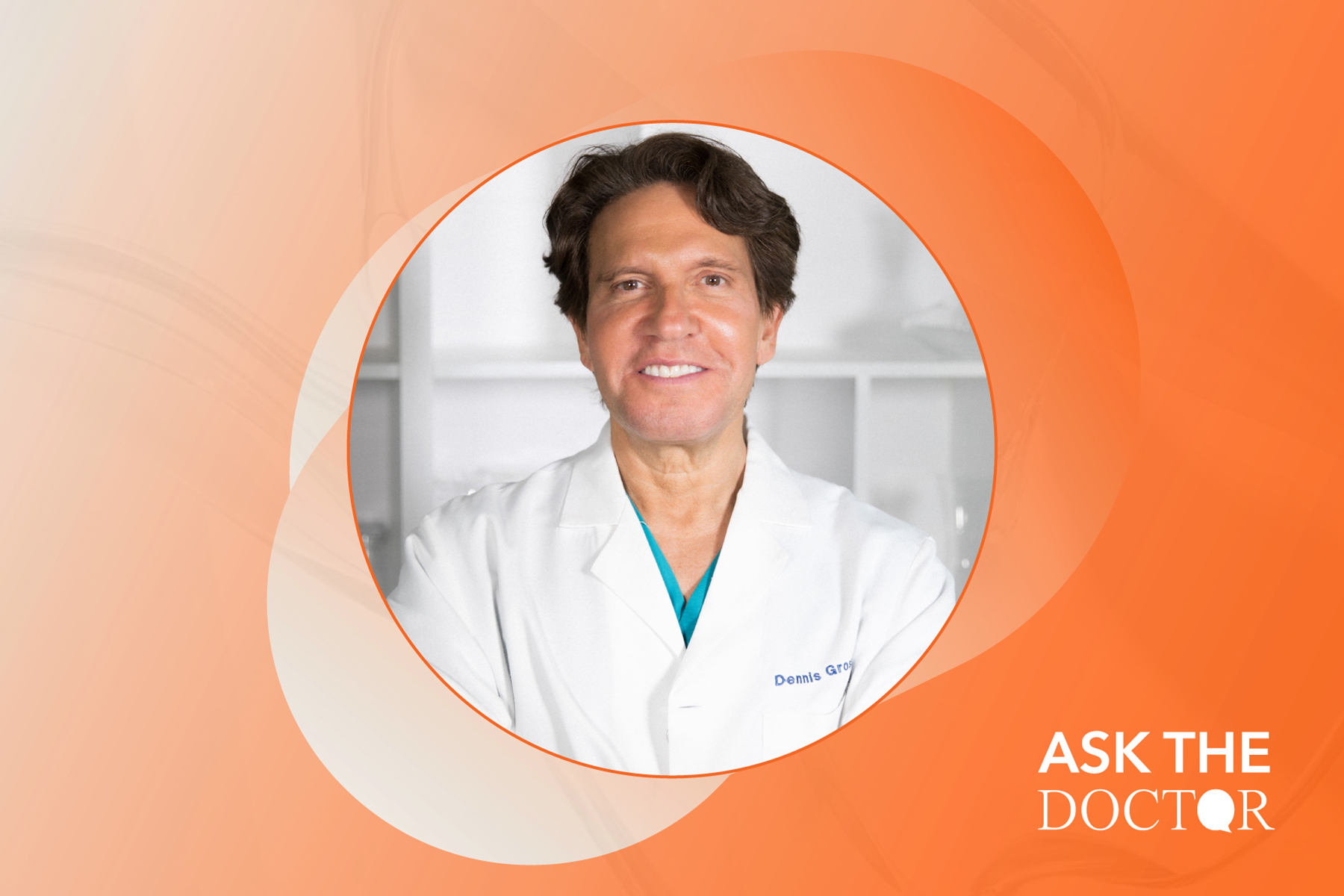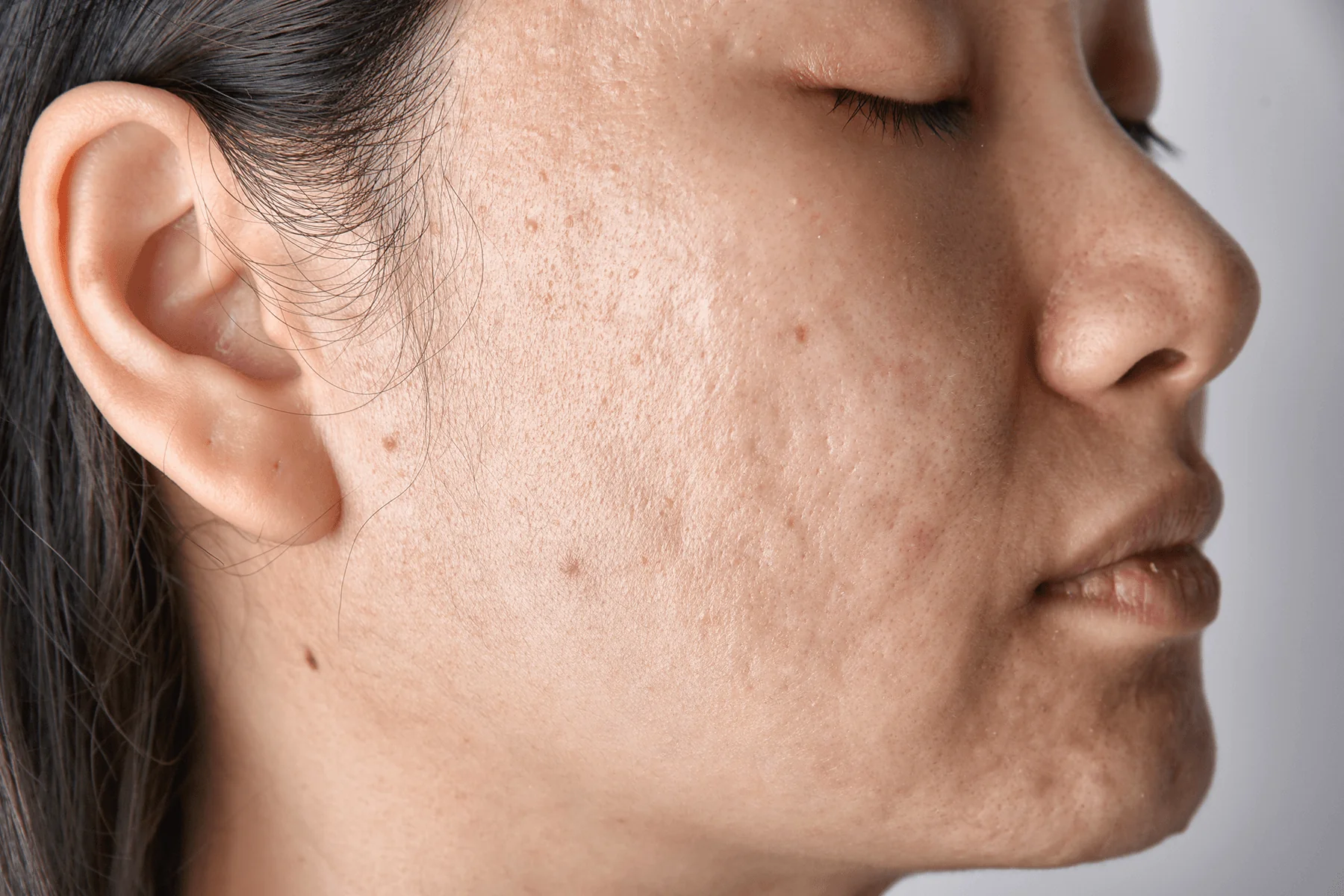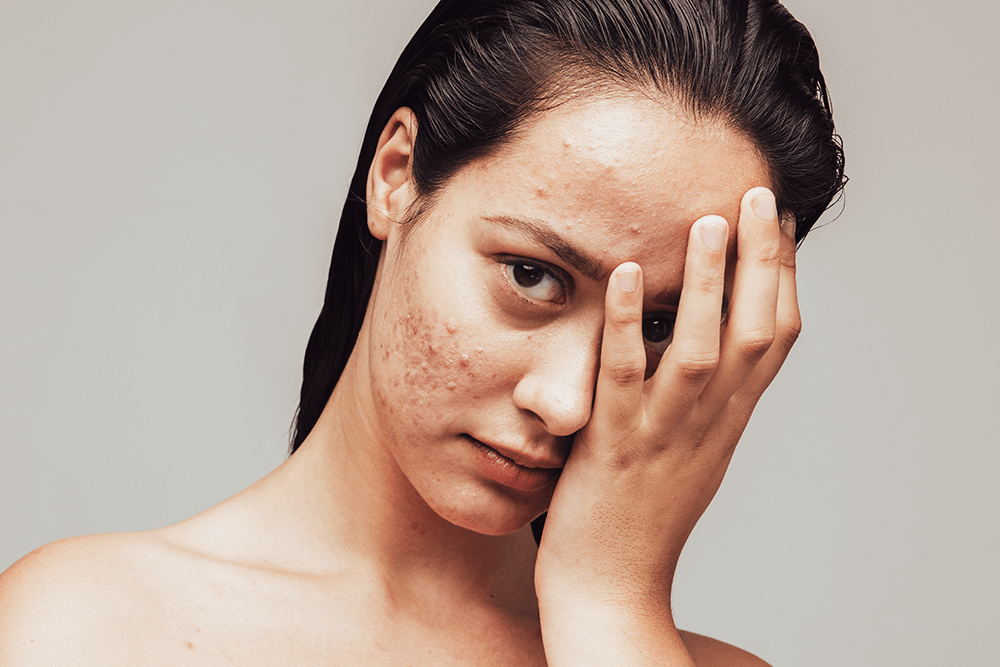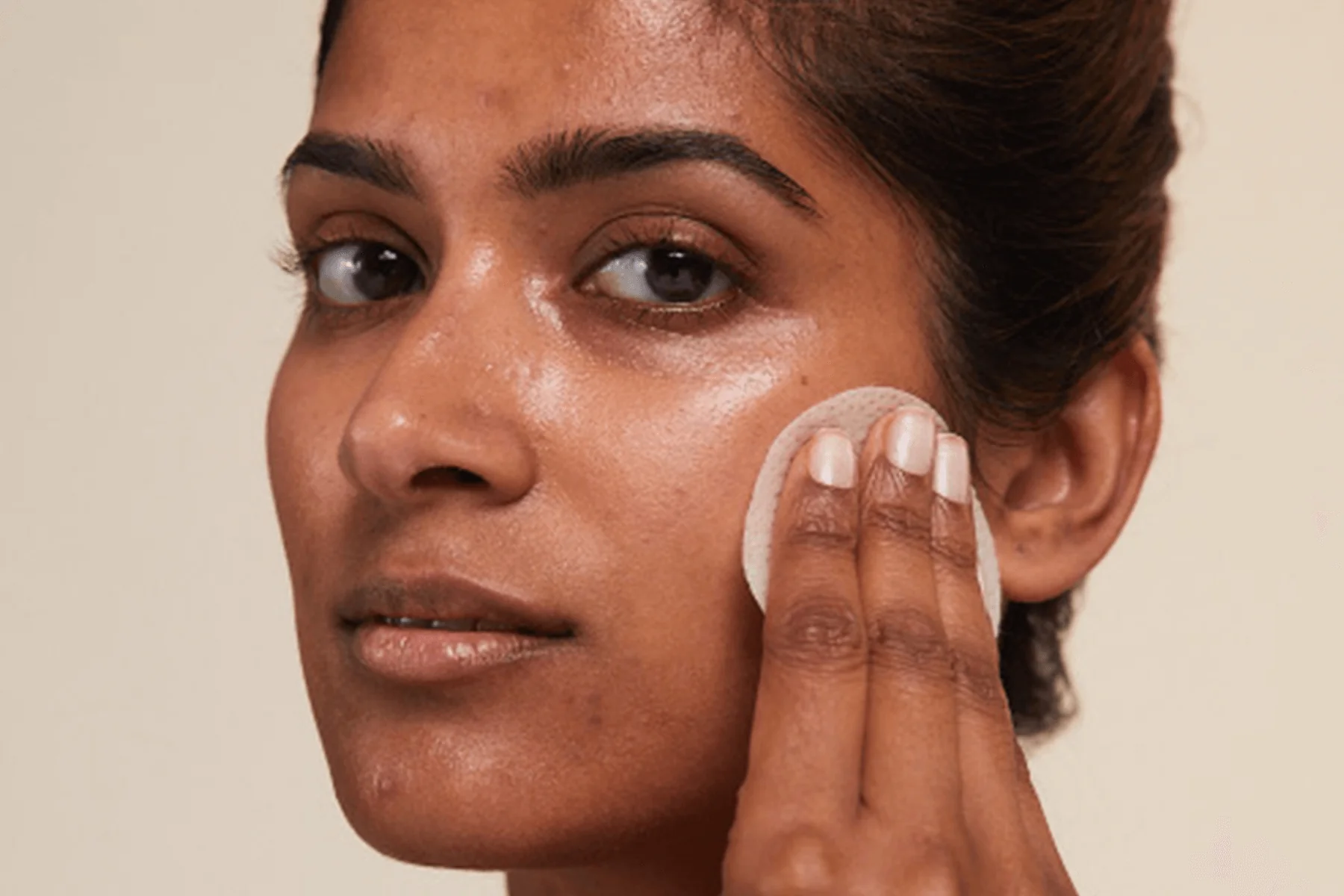The+Source
Know thy enemy, as the saying goes. And that’s especially true when you’re trying to get a handle on chronic breakouts (or just the occasional pimple). While at the core, the root cause of most acne is the same (a clogged pore), the path that leads to that end result can vary widely. And since some acne types can come from – dare we say it – user error, it’s important to acquaint yourself with the kinds of acne you may be faced with. That, in turn, will lead you to the most efficient fix.
The six standard acne types
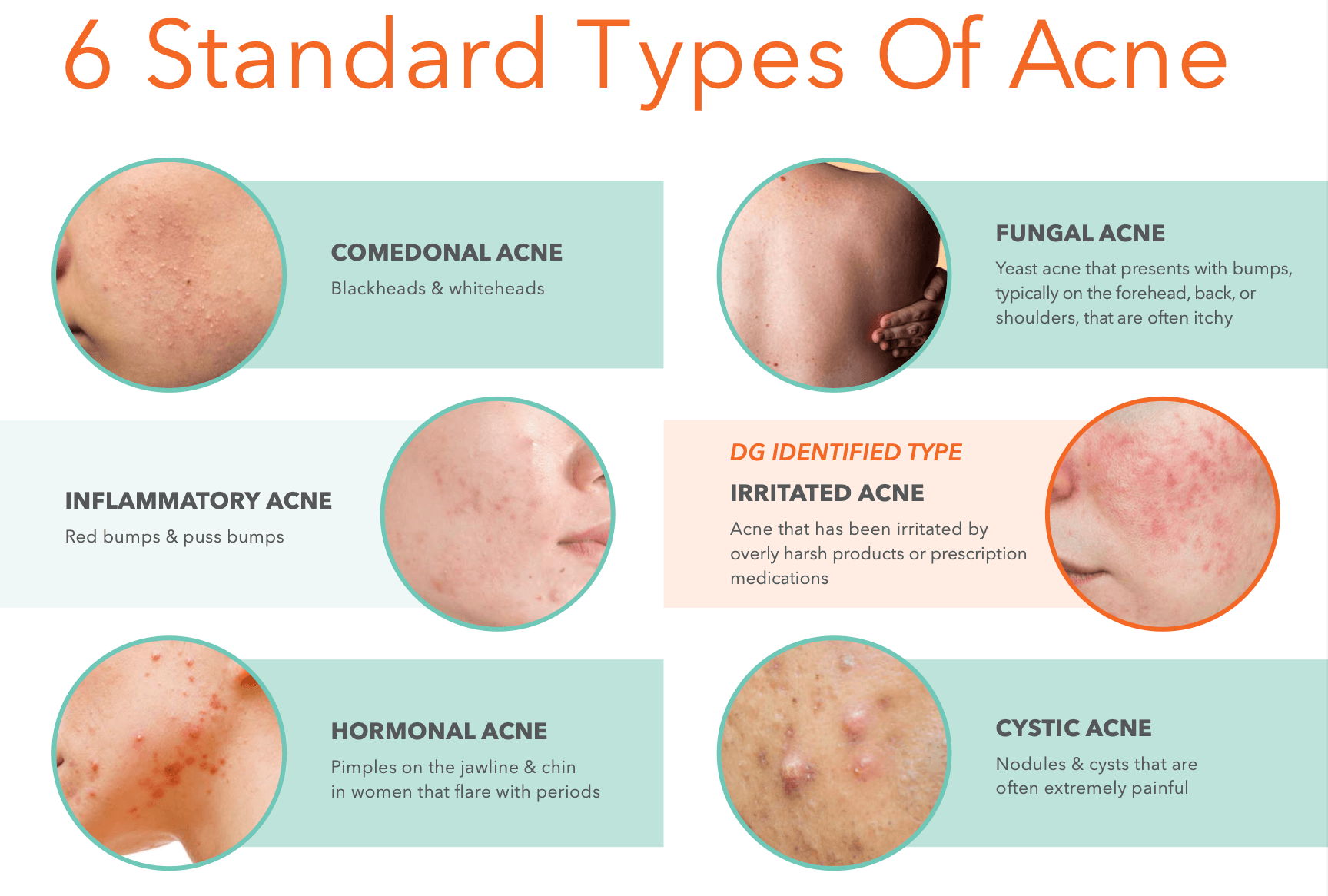
If you’ve ever had a breakout (hi, everyone), it will fall into one of the six buckets below:
Type 1: Comedonal acne
This is everyone’s favorite acne to pick at: blackheads and whiteheads. It results from sebum and dead skin cells mixing together and forming a plug near the skin’s surface. Whiteheads (aka closed comedones) are plugs right under the pore opening; blackheads, or open comedones, are the same plugs at the pore opening. (Air causes them to oxidize, which is what turns the plugs black.) And while they’re tempting to squeeze, comedones of any color are a hands-off zone.
Type 2: Cystic acne
This is the subterranean acne that presents as extremely painful cysts or nodules deep under the skin. Cystic acne is a combination of bacteria, dead cells, and oil coming together in the dermis, skin’s middle layer (hence the depth). It’s the most severe form of acne and can lead to permanent scarring. For this reason, if you suffer from cystic acne and can’t get it under control with over-the-counter products, you should make an appointment with a dermatologist ASAP. Acne itself is legit considered a medical condition, and cystic acne can often be a medical condition that requires doctor-dispensed treatment.
Type 3: Fungal acne
Fungal acne comes from an overgrowth of Malassezia yeast. Before you freak out, know that almost everyone has Malassezia yeast on their skin. It’s normally NBD, but yeast overgrowth (sweat, heat, and oil are the main triggers) can infect hair follicles and give rise to fungal acne. It looks pretty much like the regular acne you’re used to (red bumps or whiteheads) and you can get both types simultaneously, but fungal acne itches, which is how you know that’s what you’ve got. It’s also an outlier because unlike the other five types of acne listed here, fungal acne can only be resolved with antifungal medication.
Type 4: Hormonal acne
On a certain level, almost all acne is related to hormones since they impact the quality of the oil your skin produces (poor oil chemistry can lead to sluggish oil flow and easily clogged pores). But if you’re a female who sees breakouts crop up along your chin and jawline around the same time as your period, then your hormones really are to blame. (Other likely causes: pregnancy, discontinuing birth control, perimenopause, or menopause) This kind of acne can range from a blackhead to a cyst and everything in between.
Type 5: Inflammatory acne
If you have tender red or puss-filled bumps on your skin, you’re likely are suffering from inflammatory acne. (It’s the opposite of comedonal acne, which is non-inflammatory and usually doesn’t hurt.) While the cause of inflammatory acne is pretty much the same as the cause of the non-inflammatory type (dead cells mixed with oil), inflammatory acne looks the way it does because, after the walls of a clogged pore break and its contents spread throughout the skin, the body’s immune system floods the area with white blood cells. Those cells are the reason for the pus and inflammation.
Type 6: Irritated acne
This final acne type is one identified by our dermatologist founder, Dennis Gross, MD. In the case of irritated acne, you usually have only yourself to blame. That’s because it’s the result of your other product choices, whether it’s makeup containing comedogenic ingredients; harsh skincare that strips out the moisture barrier; or hair care that doesn’t even go directly on your face (but ends up melting along your hairline later). Irritated acne looks the way it sounds – skin that’s angry at how it’s been treated and shows up red and raging.
The 8 ingredients that treat acne
Pretty much no matter what type (or types!) of acne is plaguing you, these eight ingredients can help alleviate the acne symptoms you are experiencing.
5 key treatment ingredients
Even superheroes work with a team. Effectively resolving acne requires more than one ingredient. In fact, it takes five:
Azelaic acid: A naturally occurring chemical compound found in some grains, azelaic acid does double duty as both a bacteria killer and an antioxidant. It can also help stop pigment production. This means that not only will azelaic acid help prevent acne breakouts, it can also help reduce discoloration.
Lactic acid: This alpha hydroxy acid (AHA) gently loosens dead cells on the skin’s surface, preventing them from causing trouble later. This exfoliation also helps minimize the appearance of discoloration and soften fine lines. Additionally, lactic acid helps skin retain moisture (it’s naturally present in our bodies as part of the skin barrier).
Phytic acid: Another AHA, phytic acid is extremely gentle and known more for being an antioxidant than an exfoliant. That said, it does help get rid of dead cells and improve the appearance of pores. Plus, studies have shown topical phytic acid can have a calming effect on skin.
Pyruvic acid: An antimicrobial that’s derived from plant seeds and fibers, pyruvic acid has mild exfoliation abilities (it’s also an AHA), but the real magic is that pyruvic acid has demonstrated skin-calming powers. That’s excellent news for anyone whose breakout comes with a side of inflammation.
Salicylic acid: A beta hydroxy acid (BHA), salicylic acid goes where other hydroxy acids can’t – deep into the heart of pores. That’s because salicylic acid is lipid soluble (AHAs are not). Once it’s made its way down to a clog, salicylic acid is able to dissolve the gunk holding dead cells and oil together, releasing the plug and opening the pore pathway.
3 essential healing ingredients
If you’re one of the millions of people who’ve used our two-step Dr. Dennis Gross Alpha Beta Daily Peel, then you know that powerful skincare ingredients need to be tempered with soothing ones. In acne treatments, these don’t need to be in two separate steps; the two categories of ingredients can be combined into a single formula. However, the intent is the same: To help repair, protect, and calm skin. These three gentle extras are a must for any acne sufferer:
Farnesol: A plant extract, farnesol has been shown to have antibacterial and anti-inflammatory properties. This allows it to soothe irritated skin and also help bring down redness.
Hyaluronic acid: Although your first instinct may be to dry skin out as much as possible, in order to quash acne pustules, this actually has the opposite effect. Keeping skin hydrated is an essential part of any anti-acne protocol. This popular molecule draws moisture from the surrounding air into skin to keep it hydrated.
Turmeric: One component of this popular spice is curcumin, which has been demonstrated to possess anti-inflammatory and antioxidant qualities. As a result, when applied topically, turmeric can help minimize acne-induced redness and increase skin’s radiance.
Discover Dr. Dennis Gross Skincare for All Your Skincare Needs
For more skincare tips from the experts at Dr. Dennis Gross, check out our blog’s newest content. Shop the collection of Dr. Dennis Gross bestselling skincare backed by dermatologists.
